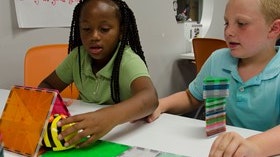Homepage
•
Learning Library
•
Blog
•
Empower students in a collaborative, flexible learning environment
Expand breadcrumbs
Expand breadcrumbs
- Learning Library
- Blog
- Empower students in a collaborative, flexible learning environment
- Homepage
- •
- Learning Library
- •
- Blog
- •
- Empower students in a collaborative, flexible learning environment
Empower students in a collaborative, flexible learning environment
By Kristin Harrington
May 11, 2017








